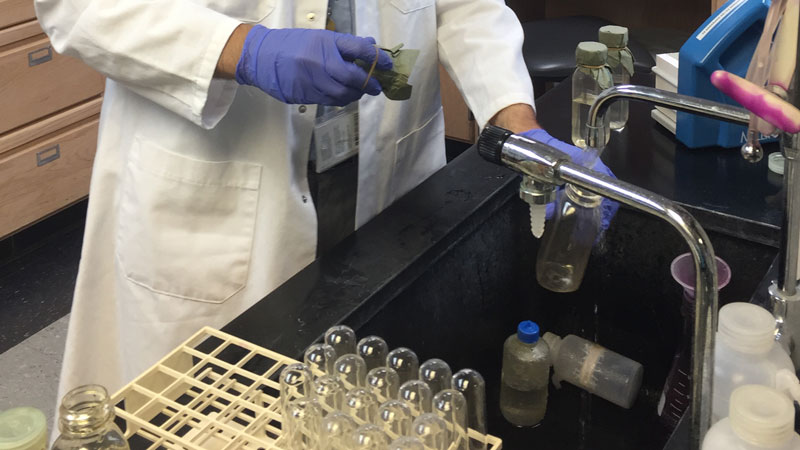You’ve spent thousands on porcelain veneers, finally achieved that flawless smile—and now, the rest of your natural teeth are starting to look… a little dull. Welcome to one of the most common dilemmas in cosmetic dentistry: how do you whiten teeth without ruining veneers?
This article gives you a comprehensive guide to keeping your entire smile brilliant—whether you're prepping for a photo shoot in Wynwood or simply want to glow poolside in Miami Beach. We’ll explore how veneers react to whitening agents, how to safely lift stains from natural teeth, and what to avoid at all costs.
Why Veneers Don’t Whiten (And Why That Matters)
Porcelain veneers are non-porous and stain-resistant, but they’re also color-stable. That means their color won’t change—no matter how much whitening gel you use. While that’s good news for longevity, it becomes a problem when your natural teeth begin to yellow over time, creating a mismatch in color.
This is especially noticeable when:
- You only have veneers on upper front teeth, and lower natural teeth yellow with age
- You’ve had veneers for 5+ years, and your original tooth color has shifted
- You’re a frequent coffee, wine, or tea drinker
Safe Whitening for Natural Teeth With Veneers
Step 1: Use a Dentist-Approved Whitening Gel Over-the-counter products are often abrasive and unregulated in strength. Choose a peroxide-based gel recommended by your dentist, ideally with a concentration of 10–16% carbamide peroxide. This is strong enough to lift stains from natural enamel but gentle enough not to damage veneers’ edges or bonding cement.
Step 2: Custom Whitening Trays Whitening trays made by your dentist ensure gel stays only on the natural teeth and doesn’t overflow onto veneers. Trays that fit poorly can cause gel leakage, leading to gum irritation or cement breakdown.
Step 3: Whitening Toothpaste (the Right Kind) Use a non-abrasive toothpaste with polishing agents—not bleach or charcoal. These formulas gently remove surface stains without roughening up your porcelain surfaces.
Step 4: In-Office Whitening for Natural Teeth Only Ask your dentist to whiten only your natural teeth (e.g., the lowers) to match the shade of your veneers. Miami dental offices like Smile Creators often use laser or light-activated whitening that takes just an hour.
What Happens if You Whiten Veneers?
If you apply standard whitening treatments over veneers, here's what won’t happen:
- The veneers won’t get any whiter.
- The cement at the edges might discolor or weaken.
- You risk uneven brightness between veneered and natural teeth.
The result? Your teeth can end up looking patchy or mismatched—and fixing it can cost more than you think.
Understanding Color Matching: Veneers vs. Enamel
Veneers are chosen based on a shade guide that includes hues like BL1 (ultra-bright) to A3 (more natural ivory). Once installed, that color is locked in.
Natural teeth, however, are dynamic. They can yellow due to aging, smoking, certain foods, or medications. So over time, even the most perfect veneers can start to look too white compared to your real teeth.
Best Whitening Products If You Have Veneers
Whitening Toothpastes:
- Sensodyne Extra Whitening – Gentle, non-abrasive, great for daily use
- Opalescence Whitening Toothpaste – Designed to maintain dental work brightness
Whitening Strips (Only for Natural Teeth):
- Crest 3D White Whitestrips Gentle Routine – Use with caution and only on non-veneered teeth
In-Office Systems:
- Zoom! Teeth Whitening – Fast and effective for patients with mixed natural/veneered smiles
- Opalescence Boost – No light needed, peroxide-based, great for enamel without harming bonding
What About Whitening Mouthwash?
Whitening mouthwashes can help keep natural teeth brighter and control plaque—but they won’t make a noticeable difference in deep stains. And some contain alcohol, which can degrade bonding agents. Opt for alcohol-free formulaslike:
- ACT Whitening + Anticavity
- Listerine Healthy White (non-alcohol version)
Lifestyle Tips to Prevent Stains on Natural Teeth
1. Use a Straw Drink dark liquids like iced coffee or wine through a straw to bypass front teeth.
2. Rinse After Eating Swish with water after pigmented meals like curry, berries, or tomato sauce.
3. Eat "Whitening" Foods Apples, celery, and raw carrots help scrub enamel and stimulate saliva flow.
4. Avoid Tobacco Smoking or vaping stains enamel and increases the risk of gum recession—which makes veneer edges more visible.
When It’s Time to Replace Veneers
If your veneers were placed over 10 years ago and look dull, too thick, or mismatched, it might be time to replace them. Newer generations of ultra-thin porcelain and lithium disilicate (E.max) veneers offer brighter shades and more natural translucency.
Ask your dentist:
- What shade did we originally use?
- How many shades have my natural teeth shifted since placement?
- Would replacing just a few veneers restore overall harmony?
In Miami’s ever-evolving cosmetic dentistry scene, veneer upgrades are becoming more common for patients chasing perfection.
What About Whitening Before Veneers?
Absolutely yes. Whitening your natural teeth before getting veneers is smart if you’re only veneering a few teeth (usually the front 6–8). This way, the veneers can be matched to your brightest natural tone—no future mismatching.
Wait at least 10–14 days after whitening before veneer placement to allow enamel color to stabilize.
Common Mistakes to Avoid
- Using charcoal toothpaste – Too abrasive and can dull veneers
- Whitening over all teeth – Will cause uneven shades and possibly gum irritation
- Skipping cleanings – Plaque buildup can make your veneers and enamel look dingy
- Ignoring gum health – Inflamed or receding gums reveal edges of veneers, breaking the illusion
Questions to Ask Your Dentist
- Can we whiten my lower teeth to match my veneers?
- What’s the safest gel to use with my restorations?
- Are my veneers at risk of discoloration?
- Should I consider replacement or polishing?
You can absolutely whiten your smile—even if you already have porcelain veneers. The trick is to focus on the natural teeth, protect the veneer margins, and work with your dentist on a strategy that keeps your smile consistent and radiant. In a city like Miami, where bright smiles are always in season, the key to long-term beauty is smart maintenance.
Whether you’re on Ocean Drive or at a Wynwood shoot, your smile can still glow—just make sure you’re whitening the right way.







